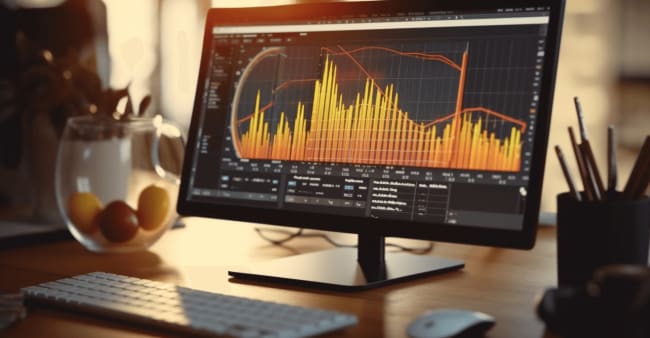EBITDA (Earnings Befor Interest, Taxes, Depreciation and Amortization) is an indicator widely used in management and accounting. In French, it corresponds to EBITDA (Earnings Before Interest, Taxes, Depreciation and Amortization).
The purpose of EBITDA is to analyze the profitability of a company's operating cycle. This cycle comprises the various expenditure and financing items relating to the company's activities.
Calculating EBITDA helps you determine whether your company's core business is generating value. This indicator can be used both internally and externally. When calculated externally, it can be used to compare the performance of companies operating in the same sector.
In general, EBITDA is calculated every year at the close of the financial year. However, it can be updated by Management Control to meet internal requirements. EBITDA can be calculated either from sales (subtractive method) or from net income (additive method).
If it is to be calculated on the basis of sales, the formula to be used is as follows: EBITDA = sales excluding taxes - purchases and external expenses - personnel expenses - other expenses.
If, on the other hand, EBITDA is to be calculated on the basis of net income, the formula to be used is: EBITDA = net income + interest expense + tax expense + depreciation expense.
When calculating EBITDA, the result can be positive or negative. If the EBITDA result is positive, this means that your company is profitable. In this case, if it was domiciled with you, it's time to contact a domiciliation company so that your head office is now housed at a very prestigious address.
However, determining the right EBITDA level is not always straightforward. In general, the right level depends on a number of factors. To get an idea of your EBITDA level, you need to make a comparison with companies of the same size as yours and operating in the same sector.
If the EBITDA result is negative, your production activity is not profitable. In the long term, this situation could lead you to liquidate your business. However, there are ways of optimizing your EBITDA. These include increasing your sales (excluding VAT), optimizing your product purchasing and reducing your external and personnel costs.
EBITDA margin is used to analyze the proportional impact of operating costs on revenues from operating activities. It is also useful when making sector comparisons.
EBITDA margin is a financial ratio that measures the proportion of this profit to total sales. To calculate the EBITDA margin rate, simply divide this profit by sales and multiply the result by 100.
Before choosing a location for your company's headquarters, you need to consider its rate of return. As a reminder, this is a financial ratio that can be measured in percentages, enabling you to assess the effect of the resources invested by the company on its profits. Determining this rate helps you to easily analyze the performance of an investment.
This analysis can concern two elements:
- financial profitability,
- economic profitability.
The financial rate of return assesses the company's ability to generate profits. As for the economic rate of return, it evaluates the ratio between earnings and the capital invested in production.
As a reminder, this rate varies according to factors such as the business model, the company's field of activity and its maturity. A good financial rate of return is around 15%, while a good economic rate of return is around 10%.
When an investor wants to buy a company and transfer its headquarters, he is interested in EBITDA for two main reasons. The first is that it helps them see the company's level of wealth creation at a glance. Regardless of the field of activity, the business plan or the accounting specificities of the country in which the company is based, the investor can easily grasp its profitability.
EBITDA is also an excellent benchmark for valuation. If it's possible to make a good deal by selling a three-room apartment for 10,000 euros per square meter, it's also possible to make a good deal by selling a company for ten times its EBITDA.
Written by our expert Editorial staff
June 22, 2023



























